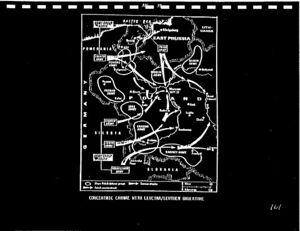Patterns of Conflict
| The works of |
| Works of John Boyd |
|---|
OODA WIKI Edition
Quantico Transcription
You look at Poland, and what do you see there? You see a lot of thrusts. You know to the uneducated eye, there’s a lot of goddamn happenings here. Not only that, they’re not—they’re really more than that because remember, they’re just showing you Army-level thrusts. They’re not down in the thrusts inside thrusts, which is all these kinds of these operations going through there. And of course they enveloped all these forces, you know, they cleaned out Poland in no time.
Not only that, you can look at that, there’s not much of a concentration there, is there? The word concentration doesn’t have much of a meaning. There’s a focus. Okay, and what’s my point? In a large scale, what it is, it’s a Cannae operation. In other words, it’s a double huge, double, you know, just look at the flow, it’s a huge double envelopment scheme, with what I would call a Leuctra/Leuthen undertone. Because there’s more weight that’s shifting in this direction from the other direction. So there’s sort of a combination of the two, to bag the forces.
Now can you see anything else there besides that? I showed you that. If you want to look at it through a Leuctra/Leuthen mindset, is there another mindset you can look at it through? And if so, what is that mindset? [05:00] You might want to use both, go ahead.
Audience: I should say the Mongols with the flying columns?
Boyd: That’s one. Remember the Mongols were doing that kind of stuff.
Audience: Multiple thrusts.
Boyd: Say it.
Audience: Multiple thrusts.
Boyd: That’s right, that’s multiple thrusts. Why are they using multiple thrusts? Let’s pin it down. Why are they using these multiple thrusts, that’s what I’m trying to pin down, that’s exactly right.
Audience: Confusion.
Boyd: Confusion, that’s great, in other words the guys can’t figure out what’s going on, go ahead.
Audience: To disclose the surfaces or the gaps.
Boyd: I didn’t hear what you said.
Audience: Surfaces and gaps.
Boyd: They’re finding surfaces and gaps, that’s true. Remember, it doesn’t say surface, in fact in your new manual, FMFM-1, it doesn’t say “surface” and “gap,” it says “surfaces” and “gaps.” So if you’re using the words surfaces and gaps, you’ve got to think multiple thrusts. Yet some people still don’t.
Audience: They have to see whether they can have success and exploit that—
Boyd: You’re still— you’re not quite getting what I want you to get. I want you to get at something very fundamental. You’re on to it, you’re all saying the right thing, what am I getting at? If I can’t penetrate my adversary, how can I envelop them or isolate them? I can’t. So the reason why you’re having the multiple thrusts is so you can penetrate into his system, isolate the components from one another. What it really is, is a penetration/isolation scheme. So those Leuctra/Leuthen maneuvers are penetration/isolation schemes. I mean, you know, if they all walk up in a line and try to go into it, they can’t penetrate it.
And that’s the idea, the surfaces and gaps. I mean that’s the thought behind it, what are you trying to do, you’re trying to duck the surface and shoot the gap, because you’re trying to penetrate his system. And then isolate, break down their organic integrity, and then scarf up the components, as you like to call it, and like the military likes to call it, in detail. Scarf them up in detail. Which you cut them off in all levels from their supporting, or their support bases as you might call, if you want to call it, and their supporting and nourishing elements.
So it’s simply a penetration/isolation scheme, that’s all it is. And then of course the overload, where you can subdue them at all levels. In this case, I’m just showing you the operational level. Okay?
